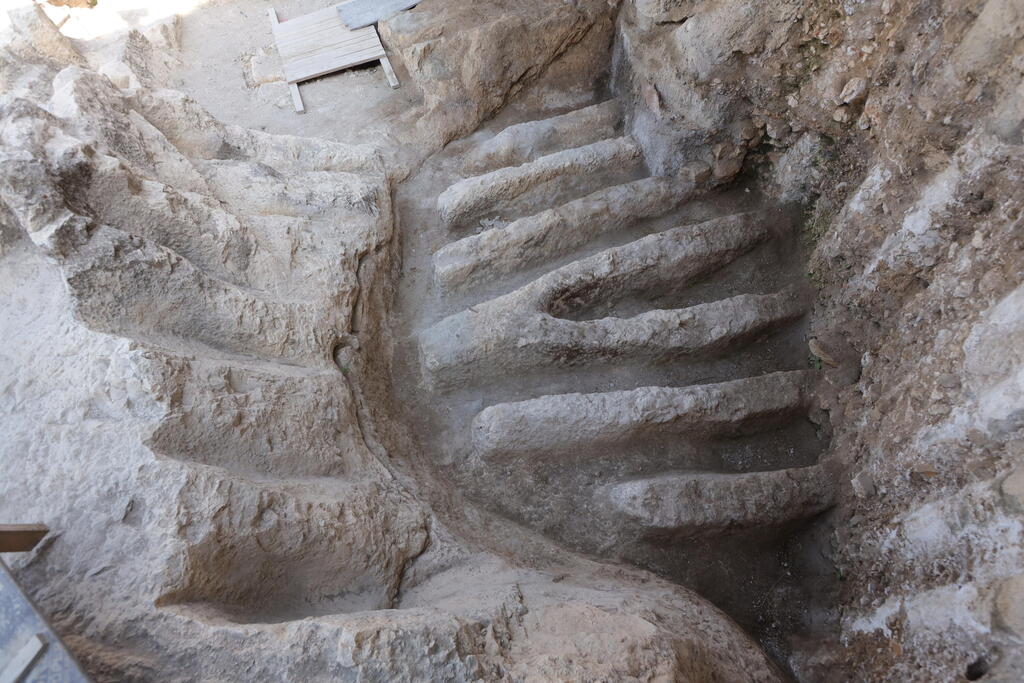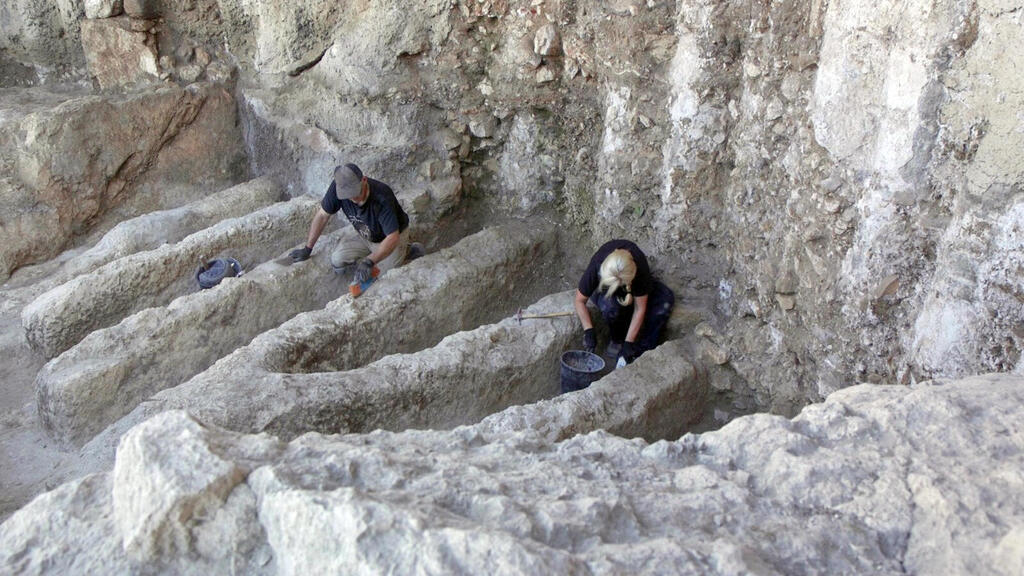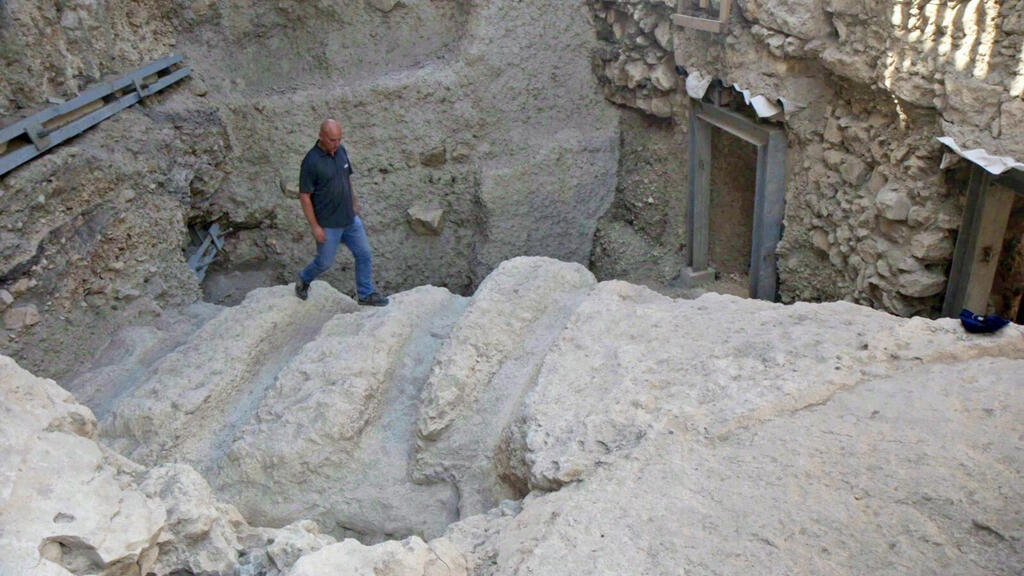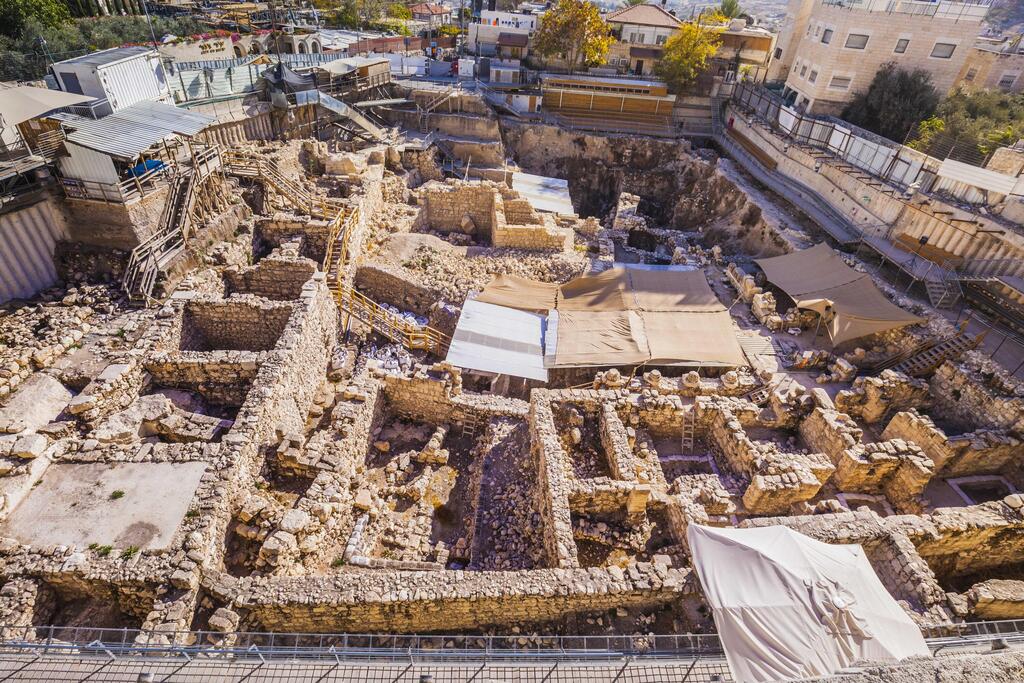Archeologists in Jerusalem were trying to determine the purpose of unique channel installations dug into the rock, that date to around 9 BCE, the time of the first Jewish Temple. They believe they were part of a production facility and their proximity to the holy site suggests that they had a special purpose.
More stories:
The channels were discovered by a team from the Tel Aviv University and the Israel Antiquity Authority (IAA) near the City of David National Park. Researchers at IAA said that two such facilities were discovered about 10 meters apart from each other during the excavations, possibly belonging to a single larger complex. These types of facilities have not been found anywhere else in Israel.
"We looked at the installation and realized that we had stumbled on something unique, but since we had never seen a structure like this in Israel, we didn't know how to interpret it," said IAA researcher Dr. Iftach Shalev. "Even its date was unclear. We brought a number of experts to the site to see if there were any residues in the soil or rock that were not visible to the naked eye, and to help us understand what flowed or stood in the channels. We wanted to check whether there were any organic remains or traces of blood, so we even recruited the help of the police forensic unit and its research colleagues around the world, but so far – to no avail," he said.
"The mystery grew ever deeper when we found the second facility to the south," said Prof. Yuval Gadot from Tel Aviv University’s Archaeology Department. "This facility is composed of at least five tunnels that lead fluids. Despite some differences in the way the tunnels were carved and designed, the second facility is very similar to the first one. This time, we were also able to date the cessation of the facility's use - around the end of the 9th century BCE, during the reigns of Kings Jehoash and Amaziah. We assume the facilities could have served together, and were carved several decades earlier," he said.
"The First Temple period was one in which we know that Jerusalem expanded across a territory that included the City of David and the Temple Mount, which served as the city’s heart. These tunnels being found near the central parts of the city suggests that the product created using these facilities was related to the temple or royal palace,” Gadot said adding that ritualistic activity at the time often involved offering agricultural produce from animals and plants to the temple. "Visitors often to the temple took back products that carried the location’s sanctity."
Shalev said it was possible that the channels were used for soaking products rather than fluid collection. "The tunnels do not lead to a large collecting basin and the direction of their flow changes. For instance, producing threads from flax requires the flax to be soaked for an extended period for getting. Another possibility is that the tunnels contained dates that were left to warm in the sunlight to produce silan (date syrup), as seen in similar-shaped installations found in distant locations like Oman, Bahrain, and Iran," he said "In the near future, we’ll take additional soil samples from these facilities and attempt to identify any components that can help us solve this mystery: what product was made there that was essential to the city’s economy."
"The ancient tunnel system before us is intriguing and makes the mind race. The excavations in the City of David, covering extensive areas in relative proximity to the city of Jerusalem, continue to reveal fascinating details about the days of the Jewish kings," Eli Eskozido, head of the Israel Antiquities Authority, said. "From time to time, we unearth surprising discoveries that challenge us and generate interest in further research. Through cooperation with other organizations, we unravel these puzzles and reach the pinnacle of modern research.”





